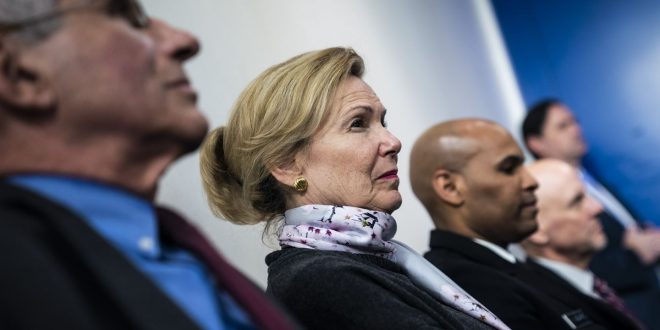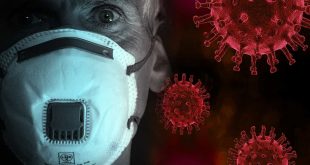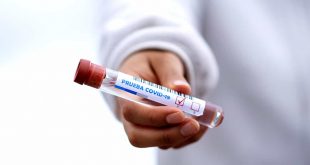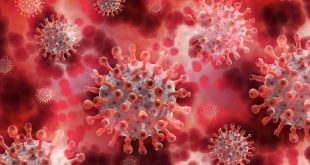And there is also the “doctors group,” a previously unreported offshoot of the original task force that huddles daily to discuss medical and public health issues, created in part to push back against demands that the health experts view as too reckless.
In theory, the task forces are all working toward the same goal: defeating the novel coronavirus and getting the nation back to work — and life — as quickly as possible. But the reality is far more complicated: a bureaucratic nesting doll of groups with frequently competing aims and agendas.
As a result, an administration that has lagged behind at nearly every step of the pandemic still has no consensus plan for when or how to reopen parts of the economy, even as the president and many advisers push to do so as soon as May 1. There is still no concerted plan for getting vital medical supplies to states, which are left to fight among themselves or seek favors from Trump. There is also no developed plan for what happens if cases or deaths spike as people begin to return to work, or how to respond if the coronavirus surges again in the fall, as many public health experts and administration officials fear.
Public health experts say that among the keys to returning to normalcy are nationwide virus testing (to determine who has the virus); serological testing (to allow those who have been exposed to the virus and developed immunity to return to work); and contact tracing (quickly tracking all the contacts of an infected person, to halt further spread). Two task force officials said that more important even than nationwide testing is surveillance — using data to make informed decisions about public health.
But the administration has not fully grappled with the sheer manpower and resources required for an effort like contact tracing — and right now, there are not even enough coronavirus tests for those who need them, let alone the entire country.
Jack Chow, a U.S. ambassador for global HIV/AIDS during the George W. Bush administration and former World Health Organization assistant director-general, said the problem is that the administration has yet to decide what the national recovery should look like.
“The whole response has been lagging the curve of the epidemic, and what ought to be happening is the designation of key strategic goals, key accomplishments that can happen within a specified timeline,” Chow said. “It sounds like they’re groping for that. There isn’t any clear direction as to what the strategic goals are in each different line of effort, and what the prospective timeline could be given the assets they have to deploy.”
This portrait of the White House three months into the coronavirus crisis is the result of interviews with 22 senior administration officials, lawmakers, public health officials and other Republicans in frequent touch with the White House, many of whom spoke on the condition of anonymity to be candid.
One of the biggest obstacles to the virus response is Trump himself. Even the most dutiful plans and projects often get caught up in the chaos of the White House. Advisers spend significant time trying to manage the president and his whims — from successfully dissuading him from seeking to reopen the country at Easter to tempering his impulse to push unproven drugs as miracle elixirs.
Even the progress can feel halting. Scientists are working on a vaccine, but that is expected to take at least a year. Basic hospital supplies are still so lagging that on Thursday, Pence suggested that medical professionals “recycle gowns.” And some states have begun to formulate their own collective plan for defeating the virus without the help of the federal government.
Marc Short, Pence’s chief of staff, said the United States is in the middle of an unprecedented outbreak where the situation changes daily, that the administration is working to bring about the conditions to allow governors to feel comfortable restarting commerce, and that they fully expect therapeutics to combat the virus to be available by fall.
Short said there are not competing task forces, but rather multiple working groups whose officials — Kushner and White House coronavirus response coordinator Deborah Birx among them — all report up to Pence through the main task force. Pence spokeswoman Katie Miller also praised the overall effort in a statement.
“Vice President Mike Pence is proud of the all-of-America approach initiated by the Coronavirus Task Force to save American lives and improve health-care delivery,” Miller said. “We are also grateful for the heroic work by front-line health-care workers as they come to the aid of Americans in need.”
On Friday, Trump described the virus as a “hidden enemy” that is “genius,” and briefly acknowledged the tough reality: “The greatest doctors in the world — I think they’re close, by the way, but they haven’t figured it out yet.”
A former senior administration official offered a grimmer assessment of the overall situation.
“Everything they’re doing is responding to something that’s already happened,” said the official, who stays in touch with administration officials. “Coordination from this White House has never been a particular strong suit.”
‘Reality show drama’
The Situation Room seating chart — sent out every morning by Short in a PowerPoint — has become one of the task force’s hottest documents.
Aides parse the power map for signs of who is up, who is down and who is likely to speak during the news conference that evening, with those closest to Pence having the best odds. Birx is almost always on Pence’s right while other, less senior aides are along the back wall or in an overflow room.
One senior administration official described it as a “little reality show drama. Every day we wait for the email. It’s like ‘Game of Thrones.’ ”
The Situation Room meetings — which usually last 60 to 90 minutes — feature a panoply of doctors, policy officials and communications aides including Hope Hicks, a close Trump confidante and former communications director who recently returned to the White House.
The vice president leads the meeting, which often begins with a prayer. The agenda, also emailed out in the morning, usually includes six to eight items, decided by Short.
Administration officials say the virus response has improved under Pence. The meetings are more organized and the vice president’s press team is responsive. Pence also engenders goodwill from many of his colleagues, unlike Alex Azar, the Health and Human Services secretary whose previous role in leading the meetings had caused discord, administration officials say.
Task force members have had spirited debates over issues ranging from how to invoke the Defense Production Act, which forces companies to make certain supplies, and where to deploy Abbott testing kits, which produce speedy coronavirus test results. One recent discussion culminated in an argument between Birx and Brett P. Giroir, the administration’s testing czar, over where such tests should be sent.
There have also been sharp fights over the modeling used to attempt to forecast the potential spread and impact of the virus. Short has repeatedly questioned the presumptions for the models, arguing that death predictions are inflated and businesses should be reopened as soon as possible.
Despite the debates, few actual decisions are made. Instead, Pence tries to reach a consensus and then bring it to the president for approval. Decisions made in the room are often undermined by Trump, and some discussions, such as guidance on wearing masks, stretched on for weeks.
Several officials say the meetings are rarely, in the words of one senior administration official who has attended many of them, “where the real action happens.”
Trump shows up to task force meetings infrequently, but when he does, he is a lively presence who often makes the gatherings more lighthearted, aides said. In one meeting, Trump suggested that he present the good news and Anthony S. Fauci, the director of the National Institute of Allergy and Infectious Diseases, give the bad news — a good-cop-bad-cop addition to the evening briefing.
The first Sunday in April, Trump entered the Situation Room and startled everyone by announcing that he wanted to do a news conference in the next two hours. He asked members of the group — many of whom had called in or were dressed casually — what they thought of the idea. When he was met with silence, he forged ahead — and aides scrambled to assemble the media.
‘Let this wash over’
During one task force meeting in the Situation Room last month, Trump turned to Fauci and challenged him.
It was the day the administration was adding Ireland and the United Kingdom to its travel restrictions, and Trump wanted to understand why talk of “herd immunity” — allowing the coronavirus to sweep a nation largely unchecked, with the belief that those who survived would then be immune — was such a bad idea.
“Why don’t we let this wash over the country?” Trump asked, according to two people familiar with his comments, a question other administration officials say he has raised repeatedly in the Oval Office.
Fauci initially seemed confused by the term “wash over” but became alarmed once he understood what Trump was asking.
“Mr. President, many people would die,” Fauci said.
The president said he understood but since then has repeatedly made clear he wants to reopen things soon — although significant roadblocks remain.
Some states have closed schools until the fall, and many child-care facilities follow the public school schedule. Trump will also need the buy-in of governors, including those of hard-hit states who may choose to continue practices more restrictive than the federal guidelines.
One senior administration official worried that some in the White House are trying to reverse-engineer their desired outcome. “They already know what they want to do and they’re looking for ways to do it,” this person said, speaking on the condition of anonymity to share candid insights. “They think it’s time to reopen because some thought it was never time to close, and they’ve made that up in their minds.”
Outside advisers to the task force and experts have also warned that if a drug to treat the coronavirus is not available by the fall, the country will have little to defend itself against another catastrophic wave of infections and will not be able to keep the economy up and running. But there is no clear plan or guidance from the administration on how to be ready for such a challenge.
Trump and some of his advisers have fixated on hydroxychloroquine, an anti-malarial drug, as a breakthrough therapy, though health experts say more study is needed and warn of risky side effects. In a recent meeting with oil executives and senators at the White House, Trump veered into a soliloquy on the drug, one of dozens of times in past weeks that he has mentioned the drug and bragged that it would work even though he says his opponents hope that it fails, according to aides.
There has also been frustration between the cities and states and the Centers for Disease Control and Prevention. One Trump adviser said the CDC has not provided local officials with enough data about what is happening nationwide. The agency has not released a snapshot of what it thinks is happening nationally, to the dismay of doctors, who now call each other or look for advice on Twitter.
But a senior administration official said part of the problem is that the cities and states have been slow to report their own data to the federal government.
Frustrated with ‘voodoo’
Shortly before the official task force meeting nearly every day, six doctors hold their own meeting, sometimes reconvening afterward.
They grapple with the complex public health and medical questions over how to safely reopen the country, and they are crafting a plan to run past additional health experts once complete.
The group is led by Birx — who asked Pence for permission before forming it several weeks ago — and includes Fauci, Giroir, Surgeon General Jerome Adams, Food and Drug Administration Commissioner Stephen Hahn and CDC Director Robert Redfield.
It sprang up after some of the doctors grew frustrated with the “voodoo” included in the larger meetings, such as Trump’s hydroxychloroquine push, one senior administration official said. Health officials, including those at the FDA, have been routinely distracted by requests from the White House, even as experts argue that the top priorities should be a vaccine and a drug that is ready by the fall.
In their working group, the physicians have spent time discussing how to moderate Trump’s public message on the anti-malaria drug. And they also view their smaller meetings as better for the scientifically driven policy debates that are sometimes hard to have in the official task force gatherings.
Dominating much of the group’s time recently has been the antibody testing known as serology testing, which would allow officials to identify people with probable immunity to the virus who could safely return to work.
The FDA hopes to approve a serology test in the coming weeks that could be used widely — but not everyone will be able to be tested right away. So far, officials have tentatively agreed that health-care workers, food workers and front-line responders should be given priority for serological tests because they are most at risk of having been exposed to the virus. As fall approaches, students and teachers will also be a priority, one official said.
But as of now, nearly three months since the first coronavirus case was reported in the United States, no plan is set.
On Friday, Fauci expressed caution in an interview on CNN about reopening the country too soon: “I would want to see a clear indication that you are very, very clearly and strongly going in the right direction, because the one thing you don’t want to do is, you don’t want to get out there prematurely and then wind up back in the same situation,” he said.
Hours later, Trump similarly teased his upcoming choice, trying to summon the gravity of the moment.
“I have a big decision coming up and I only hope to God that it’s the right decision,” the president said.
 The Argus Report Read about it!
The Argus Report Read about it!





